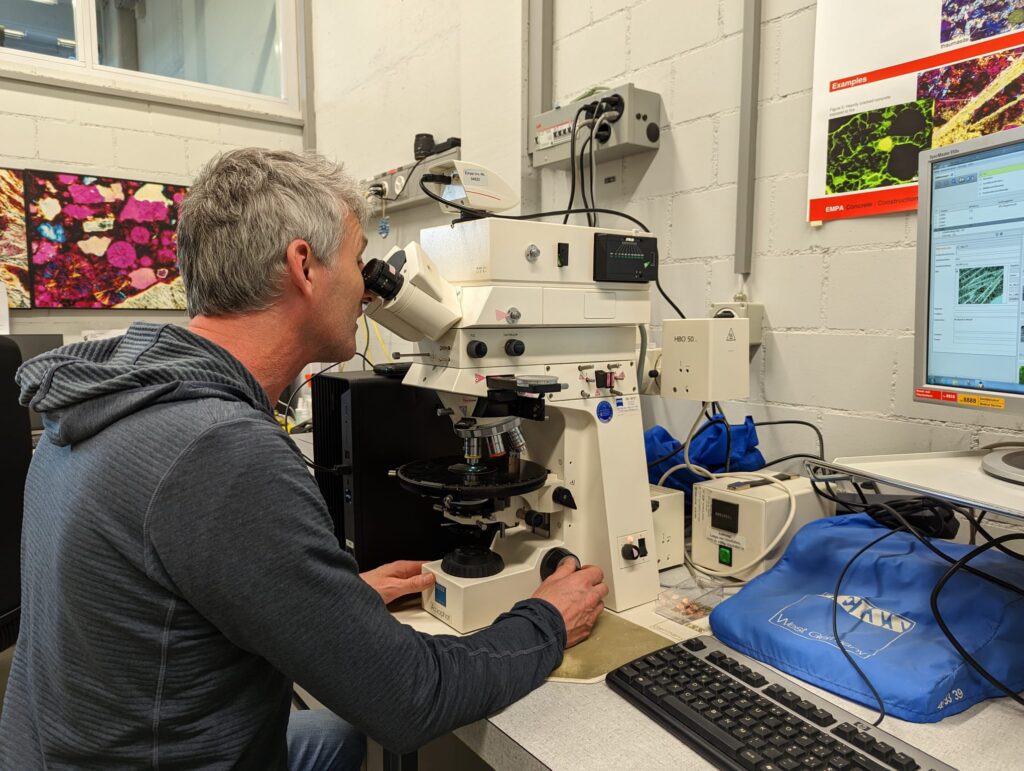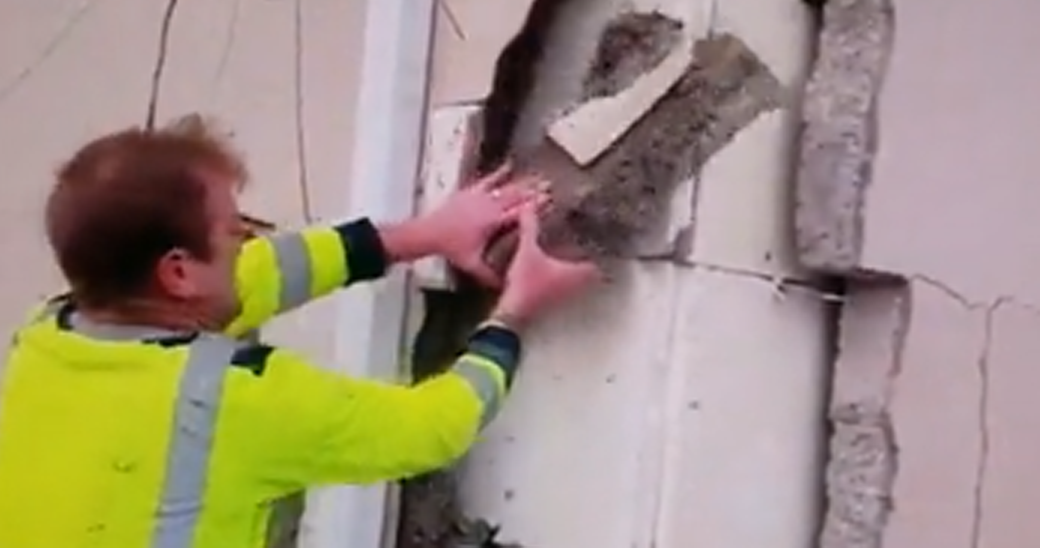A video of a crumbling home in Donegal is reaching millions of people worldwide while shining a light on the defective blocks crisis.
The clip, which has 3 million views, shows campaigner Paddy Diver breaking blocks off a family home in the Isle of Doagh with his bare hands.
The video was taken some time ago, but a recent share by Buncrana-based Professor Paul Dunlop on Twitter has shocked people worldwide.
Watch here:
When I bought my new Donegal home I never could have imaged having to demolish it 17 yrs later. I could never have imaged all the new neighbours having to do the same (49 of them). I have hardly a friend whose home isn’t destroyed by defective blocks, my community is in ruins pic.twitter.com/yvuOFS3fwR
— Professor Paul Dunlop (@ProfPaulDunlop) August 2, 2023
Prof Dunlop said the video’s viral status is an opportunity to highlight the social impact of the crisis, as well as the science behind the defects.
“It’s been a really good opportunity for campaigners to air their concerns about what has been happening,” he told Donegal Daily.
“People are tweeting about it in different languages and different companies are contacting me, asking ‘is that really concrete’, and ‘how is it happening?’”
Prof Dunlop, whose own home is also affected by deleterious materials, is highlighting the nightmare situation faced by families who have to leave their homes to be demolished.
His tweet says: “When I bought my new Donegal home I never could have imagined having to demolish it 17 yrs later.
“I could never have imagined all the new neighbours having to do the same (49 of them).
“I have hardly a friend whose home isn’t destroyed by defective blocks, my community is in ruins.
“Inishowen is in ruins and communities are being torn apart by this crisis. It is a desperately sad situation for families. You have to be in the middle of it to fully appreciate the devastation.”
Paddy Diver said: “Children are being mentally tortured about what is happening to their homes, and then they could end up having to move to Buncrana, Letterkenny, Carndonagh, miles away, where they might have to change schools or their parent will have to drive them.
“The government haven’t grasped this situation. They are saying there is money there, but we have to sit here in Donegal, and see how Pyrite homeowners were looked after end-to-end.”
Diver says he sees ‘no will to care’ about the children in defective block homes who are uprooted while their homes are being demolished. Where no rental homes are available, mobile homes have emerged as the only option.
“Children can’t live in a caravan, looking out the window, watching their house being tossed to the ground.”

Professor Paul Dunlop using optical petrographic and scanning electron microscopes to analyse Donegal defective concrete blocks at Empa, Switzerland in May 2023.
Dunlop says his primary motive for the tweet was to highlight the fact that defective blocks destroy a home, but also impact massively on entire communities.
“We have a situation where families are having to move away from their home locations and trying to rent somewhere else. Their friends and families are not there. They are basically blow-ins who are dislocated from their community. That is going to increasingly become a problem because as people enter the scheme, there is nowhere to rent.
“Everyone is going to be in the same boat because there has been no provision for emergency homes, even though there have been calls for a temporary area for modular homes, the council has done nothing.”
Prof Dunlop is a leading geographer at Ulster University. He is part of a research group that published a groundbreaking study into severe structural defects in thousands of homes in Donegal.
Experts found that the mineral pyrrhotite present in the aggregate accounts for the phenomenon of concrete failure.
Prof Dunlop is sharing his research across Twitter with those who are questioning the science behind the crumbling home in the video.
The research is the first internationally peer-reviewed article of its kind and has been made available for public access here: https://www.sciencedirect.com/science/article/pii/S0008884623000613?via%3Dihub
Meanwhile, an international consortium of researchers is continuing their work at the forefront of understanding how mineralogy impacts concrete blocks. The independent team is made up of experts from Ulster University, Geological Survey of Ireland, Laval University/Canada, Empa/Switzerland, University of Connecticut/USA and Concrete Research and Testing LLC/USA.
The group is currently working on independent research to advise on the national review of IS 465 standard, upon which the government grant scheme is based.






